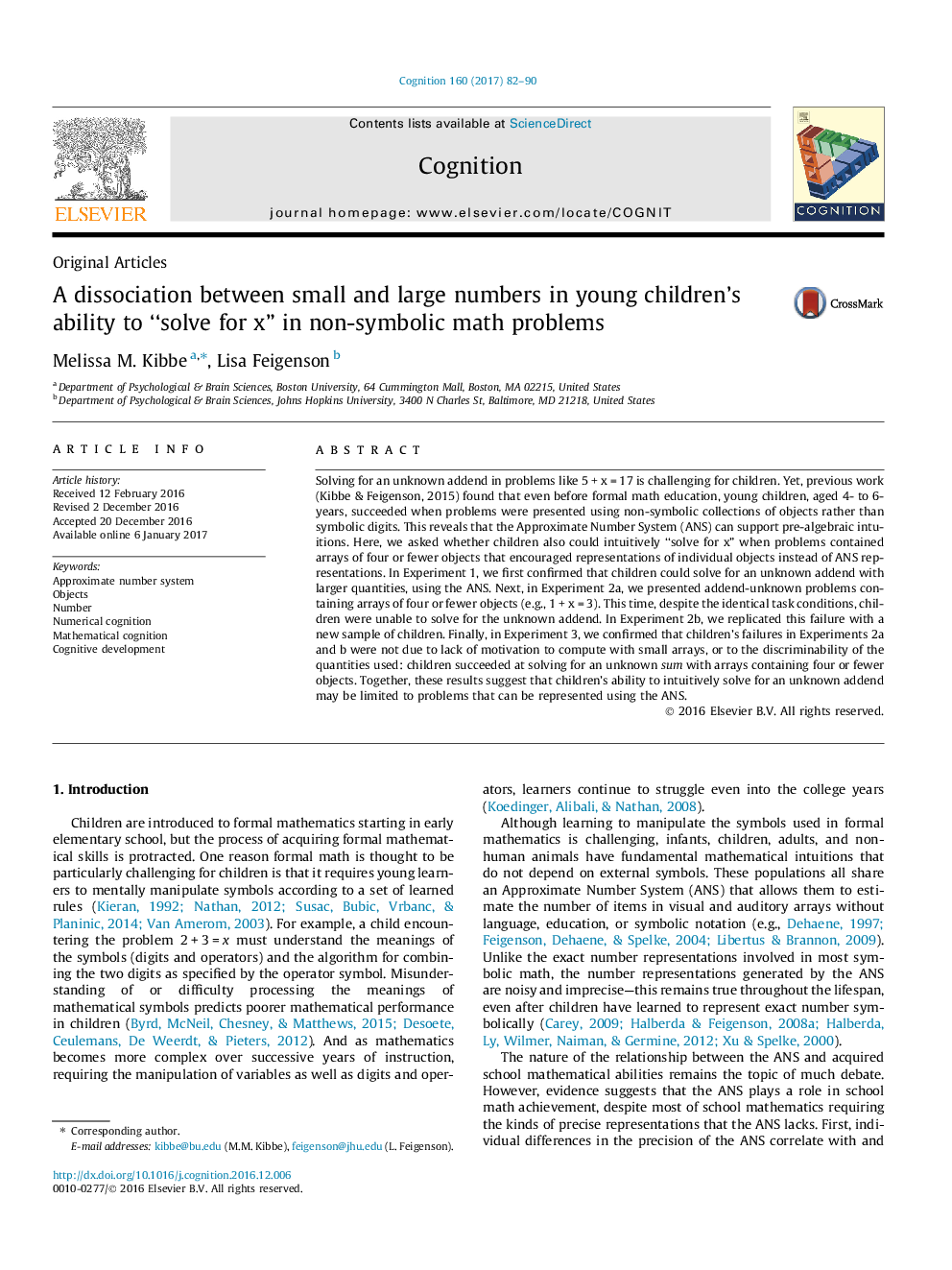| Article ID | Journal | Published Year | Pages | File Type |
|---|---|---|---|---|
| 5041625 | Cognition | 2017 | 9 Pages |
â¢Children can 'solve for x' in non-symbolic problems using the Approximate Number System.â¢We found children were unable to 'solve for x' using individual object representations.â¢This failure was not due to lack of motivation or problems discriminating quantities.â¢Different quantity representations may support different kinds of computations.
Solving for an unknown addend in problems like 5 + x = 17 is challenging for children. Yet, previous work (Kibbe & Feigenson, 2015) found that even before formal math education, young children, aged 4- to 6-years, succeeded when problems were presented using non-symbolic collections of objects rather than symbolic digits. This reveals that the Approximate Number System (ANS) can support pre-algebraic intuitions. Here, we asked whether children also could intuitively “solve for x” when problems contained arrays of four or fewer objects that encouraged representations of individual objects instead of ANS representations. In Experiment 1, we first confirmed that children could solve for an unknown addend with larger quantities, using the ANS. Next, in Experiment 2a, we presented addend-unknown problems containing arrays of four or fewer objects (e.g., 1 + x = 3). This time, despite the identical task conditions, children were unable to solve for the unknown addend. In Experiment 2b, we replicated this failure with a new sample of children. Finally, in Experiment 3, we confirmed that children's failures in Experiments 2a and b were not due to lack of motivation to compute with small arrays, or to the discriminability of the quantities used: children succeeded at solving for an unknown sum with arrays containing four or fewer objects. Together, these results suggest that children's ability to intuitively solve for an unknown addend may be limited to problems that can be represented using the ANS.
